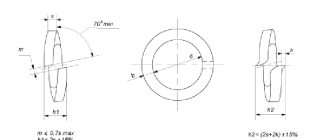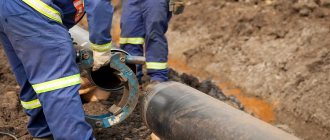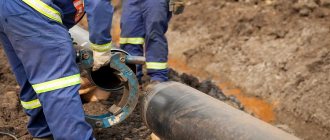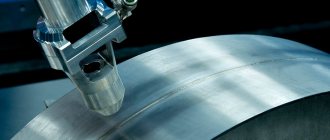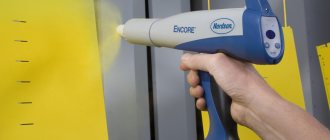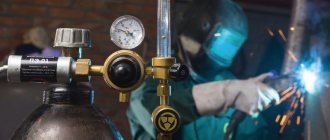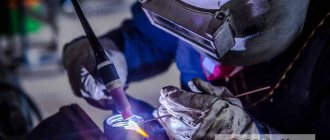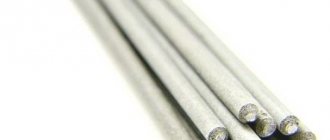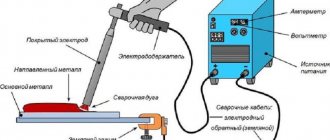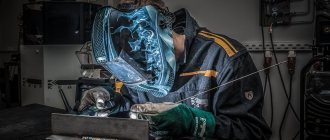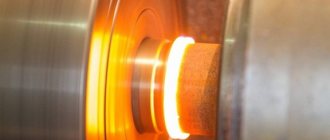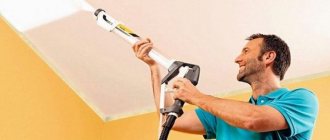Metal structures are complex products (structures) consisting of individual metal elements and parts. To reliably connect these elements to each other, different methods are used: welding and fastening. In turn, bolts and rivets can be used as fasteners. Let's take a closer look at each method of connecting metal structure elements and the requirements for such connections.
Bolted connection and welding of metal structures: advantages and features
Construction from metal structures has successfully proven itself in almost all areas of business, allowing you to quickly, efficiently and relatively inexpensively build reliable, durable areas for organizing activities.
The installation of buildings from such structures is based on the method of bolting and welding of metal structures, thanks to which individual elements take the form of a full-fledged functional structure. Despite the fact that in addition to welding and bolting of metal structures, fastening based on rivets and soldering also takes place, the presented options are still the most popular and most often used due to their advantages and connection technology.
Which connection is more reliable: bolted or welded?
It is no longer possible to imagine modern life without metal structures. They are used everywhere. But according to statistics, in most cases metal structures are prefabricated. They consist of individual elements that need to be connected.
There are a number of advantages to prefabrication:
— parts can be replaced if worn or damaged;
— a structure made from prefabricated elements is much lighter than an all-metal one, which means there is a significant saving in metal;
— delivery of individual parts of a metal structure is much easier than the entire product. Of course, this applies primarily to large structures, and due to the fact that transportation costs are now not cheap, logistics optimization in general is very profitable.
Methods of connecting parts of metal structures may be different. First of all, the functional task and operating conditions of the structure are taken into account. The connections can be riveted, soldered, etc. But the most common are welded and prefabricated bolted connections.
Welding connection advantages and disadvantages
One of the main advantages of welding is that the weld can be sealed. Thanks to this, water will not get between the parts being connected and corrosion will occur. Another important advantage is the ability to fasten parts in any spatial position. Using welding, you can connect parts in places where connecting with bolts would be impossible. Another important advantage for welding connections is its low cost.
The disadvantages of welding include overheating of the part at the weld site, and as a result, increased susceptibility to corrosion. Also, when the metal overheats, it can become deformed. Another difficulty is the need to have a welding machine, electricity and a qualified welder.
Bolted connection advantages and disadvantages
The main advantage of a bolted connection is the ability to disassemble it. In designs that require periodic replacement of parts, this is a very big plus. Another advantage of such a connection is its strength; it is not inferior to a welded connection.
One of the disadvantages of a bolted connection is the need to match the parts in geometry. When connecting, the surfaces must be completely identical. Another disadvantage is the difficulty of aligning the bolt holes. They must match completely, otherwise the bolts simply will not fit into the hole. In this regard, connecting with bolts is quite a labor-intensive task.
As a result, we can conclude that bolted and welded connections provide approximately the same strength. And the choice of the type of connection must be made based on the design features, operating conditions, and technological load on the structure.
Source
Welding
Due to the fact that this type of metal structure is lightweight and the thickness of its elements is small, the use of welding during installation requires special care. Seams of small thickness, as a rule, do not contain internal defects that can be observed with large sizes, however, they can be porous and, as a result, not very durable. When welding thin steel, a special technology is used, the key point of which is the rapid removal of heat from the weld zone and the use of special, quickly melting electrodes.
Rivet connections
According to their purpose, rivet joints are divided into strong, dense and durable. Strong connections are used in the assembly and installation of columns, trusses, beams; dense - tanks, reservoirs; durable - for the manufacture of containers under pressure.
Riveted joints are used in the manufacture of heavy crane beams, bridges, span elements and other structures for which it is necessary to ensure high vibration strength. Most often, rivets with a diameter of 12-30 mm are used, which are placed in holes whose diameter is 1-1.5 mm larger than the diameter of the rivet.
The diameter of the hole is taken as the calculated diameter of the rivet, since when the closing head is formed, the head rod settles and thickens.
The length of the rivet is selected taking into account the thickness of the package being connected and the length of the rod used to form the closing head and fill the gap between the hole and the rod.
Shearing, compressive and bending stresses arise in the rivets themselves and in riveted joints; the most dangerous of them are cutting and compressing ones.
Riveting is performed using hot and cold methods. Hot riveting is usually done in a factory. Electric or pneumatic riveting brackets are used for this purpose. A rivet heated to 900-1100°C (orange) is inserted into the hole of the elements being connected. As it cools, the rivet shortens and tightly tightens the riveted bag. In the conditions of the installation site, riveting is carried out in a cold way using pneumatic riveting hammers. Operations are performed in the following sequence: manufacturing parts with holes; installation of temporary bolts in some of the holes (at least 1/3 of all rivets); drilling (if necessary) holes in prefabricated parts; directly riveting. When installing rivets, they are held in place by hand supports.
Rivets are arranged in one or several rows. The distance between the axes of the longitudinal row of rivets, i.e. installed along the applied force is called a step, and in a transverse row - a track. Depending on the number of rivets in the connection and their location, assembly riveting is divided into node and row. A knotted rivet is considered a rivet if there are no more than 15 rivets in a knot, an ordinary rivet is considered a rivet if the number of rivets in a knot is more than 15.
Pneumatic drilling machines are used to drill holes.
The quality of supplied rivets is checked by external inspection, measurements and tapping. During external inspection, make sure that there are no distortions, and when tapping, that the hole is completely filled with the rod. For this purpose, a control hammer weighing 0.3-0.4 kg is used. Impacts are applied to the side surface of the heads in a direction perpendicular to its axis.
Weak rivets are replaced. To remove the rivet, one of its heads is cut off with a chisel or cut off with an oxygen cutter, after which the rivet rod is knocked out with a pneumatic hammer and drift. To make it easier for the rivet to come out of the hole, it is filled with kerosene from the side of the cut firebrand.
Rivets in structures made of aluminum alloys are made from alloys of the same grades as the elements being connected, and are placed only in a cold state. Contact of aluminum alloys with other metals is unacceptable, since electrochemical corrosion occurs at the points of contact.
Assembling mounting connections on high-strength dowels
Persons who have completed training confirmed by an appropriate certificate are allowed to make installation connections on high-strength dowels and supervise the work. When making installation connections on high-strength dowels, you must follow the operating instructions for powder-powered installation tools, which regulate the procedure for putting them into operation, rules of operation, maintenance, safety requirements, storage, accounting and control of pistols and mounting cartridges for them.
Before starting work on installing connections on high-strength dowels, a control shooting should be carried out to clarify the shot power (cartridge number). The distance from the dowel axis to the edge of the supporting element must be at least 10 mm in any direction. When installing two dowels side by side, the minimum distance between them is determined by the condition of placing the steel washers close to each other.
The installed dowel should tightly press the washer to the part being fastened, and the part being fixed to the supporting element. The cylindrical part of the dowel rod should not protrude above the surface of the steel washer.
Types of connections
There are the following types of connections of metal structures.
Welded joints
This is the fastest way to join two or more metal parts. Modern welding equipment allows you to perform these operations almost anywhere where there is a power supply - at a construction site, in a country house, in the forest. Inverters developed in recent years are mobile and lightweight.
Bolted connections
The convenience of this type of connection is that the structures that they hold can be dismantled, transported to another location and reassembled. The strength of such a connection is very high, as is the ease of assembly.
Some inconvenience when using such connections is that this increases the consumption of metal for the connections. Again, there is a possibility of weakening of the connections and the appearance of a gap between the body and the bolt. Products that are connected in this way contain the necessary holes after they are manufactured by the metal fabrication plant.
Rivet connections
Today this is the least common type of connection for metal structures. Although in terms of vibration resistance and resistance to alternating loads, this type of connection is very good.
Recommendations for choosing fasteners for connecting metal products
Various methods of joining metal products are used in a wide variety of industries and production: from the creation of electronic devices to construction. After treatment with special compounds that increase their strength and anti-corrosion properties, fasteners are suitable for use in aggressive environments, in conditions of high humidity.
The service life of the finished product or structure also depends on the fasteners used, so when choosing them you should pay attention to the following:
- the strength of the fastener must be higher than the strength of the workpieces being connected;
- high tightness, regardless of the object at which one or another fastener and/or method of connecting metal products is used;
- high-quality materials, thanks to which high reliability and safety of the finished structure is achieved;
- the type and diameter of fasteners are selected in accordance with the expected nature of the impact (transverse or longitudinal, static or dynamic).
Types of metal structures and features of their installation
According to the type of connection, metal structures are welded, riveted and bolted.
Welded structures
Installation by welding is the simplest, but not always acceptable. Structures mounted using welded joints are immobile, which means they cannot be disassembled and moved to another location.
The average cost of installing metal structures by welding is determined by the price per ton and is approximately 12 thousand rubles.
Riveting devices
This connection method is not as popular as welding, but it has a significant advantage - reliability at low and ultra-low temperatures. Installation work on bridges and buildings with heavy loads is carried out mainly using rivets.
Bolted connections
Installation of structures using bolts, nuts and washers is called bolted. Its main advantage is its possible disassembly. This installation method is suitable for structures of various types: from mobile racks and stairs to metal trusses and frames of long-span buildings.
After installation of metal structures, they are grounded. You can order the installation of structures made of metal structures by calling. +7-961-777-39-96.
Installation of metal columns
Columns are the basis of the frame of the future building. It is on them that the load-bearing capacity is assigned. Typically, columns are attached to a solid concrete foundation. The most commonly used methods for attaching them are:
- using anchor bolts, after adjustment, the joint is filled with a sufficient amount of concrete mixture to strengthen the adhesion;
- directly with the foundation to the level of the base, no additional concrete screed is required;
- using support sheets, auxiliary cement pouring is carried out if necessary.
When constructing columns, the gaskets used are necessarily welded to the base. On the upper tiers, welding or special fastening systems, as well as bolting, are used to install elements of metal structures (in particular, columns).
General understanding of welding and seams
The connection of metals by welding is permanent. The most famous and widely used types include welding using gas and electricity. The products are connected due to the energy released when they are heated when they come into contact. The molecules of the molten parts of the metal come into interaction. Therefore, the resulting seams have the same strength characteristics as the connected structures. According to the method of their connection they are divided:
Pros and cons of welding connections
Their disadvantage is:
General concept of bolted connections
The connection using bolts is detachable. Several types of bolts are used:
Pros and cons of bolted connections
The advantages of such a connection include: first of all, their detachable connection. It is important where the structure must often be disassembled and replaced, but the connection must be reliable.
The disadvantage of this connection is its limited installation. The surface of the connection elements must match exactly.
The main types of welded joints used in welding metal structures.
- Butt joints.
With this method, the elements are connected by end surfaces, being in the same plane. There are a total of 32 types of such connections, designated according to GOST by the letters C1, C2....C32.
Figures No. 1 show several main types of butt joints for fastening metal structures.
A distinctive feature is that welding occurs along the entire length of the edge. Its type depends on the thickness of the metal being welded, the plane of contact, and the availability of the necessary equipment. Butt welds can be with a selected edge (Fig. 2a), without edge preparation (Fig. 2b), with one separate edge, with a straight or non-linear groove shape, with V and X-shaped. The lines that form the bevel of the edge can be straight or curved. If the metal thickness is up to 60 mm or more, the edges are made on a planer or thermal cutting.
The main rule is that the total bevel angle should be within 50±4°. This type is considered one of the most economical, but more labor-intensive and requires great precision when performing work.
- Corner connections.
Areas of application of various methods of joining metal products
Various methods of fixing metal elements are used in different areas of industry, as well as in everyday life. They are used in furniture production, construction, heavy industry, etc.
Keyed and splined fasteners are common in the areas of creating power tools, equipment, and mechanical engineering. Without interference joints it is impossible to produce gear shafts and worm wheels. Soldering is necessary for working on electronic equipment that requires high precision. Rivets are used to connect thin sheet metals.
As technological progress develops, new ways of joining metal products appear. Modern life is impossible without various machines and mechanisms. In order for them to last longer, reliable fasteners are needed. The quality of fasteners also determines the shape of the finished product, the quality of its work, the risks of accidents and emergency situations in production, etc.
In the article we talked about the types and methods of connecting metal products and parts. Before purchasing any fastener, you should inspect it for defects. Parts deformed during operation can be used for the outer contours of metal workpieces. Thus, savings on consumables are possible, but without compromising the quality of the finished product.
Stages of creating a staircase with your own hands
Making a metal staircase with your own hands is quite simple, and it doesn’t matter whether the structure is being built on the porch or on the second floor, only the type of structure changes. The first thing you need to do is decide on the type of building, depending on its purpose.
And then just follow the instructions clearly and carefully think through your steps.
Calculations
If you ordered a design calculation from a special company, then such organizations use computer programs to create the design. In such a program, parameters can be easily changed, and after the customer approves the final version, the computer produces drawings.
If you did not contact a design company, but decided to complete the drawings yourself, then it will be a little more complicated. Let's consider performing calculations for the simplest design - a straight single-flight one.
There are standard requirements for calculations
- The height of the steps should be 17-18 cm.
- The optimal width of the stairs for private houses is 90 cm.
- The minimum depth of steps is 27 cm.
- The step of the staircase structure is 60-65 cm, this includes the height of the step and riser.
- The optimal angle of inclination of the steps is 30-45°.
- The fence must support a weight of about 100 kg.
- The minimum distance between fence posts is 15 cm.
In addition to the standard requirements, to manufacture a straight single-flight structure, it is necessary to perform the following calculations:
- Fixture length. To do this, you need to calculate two sizes. The first is the distance from the beginning to the end of the stairs (meaning the distance from the first floor to the second). The second is the height between them. You got two numbers. Each one must be squared and then folded. Next, extract the root from the resulting number.
- Number of steps. To do this, it is necessary to divide the resulting length of the device by the selected step height. The optimal height is indicated in the standard requirements.
- Depth of steps. It is necessary to divide the length of the staircase by the number of steps and see that the resulting figure meets the requirements; if necessary, change the dimensions in the previous paragraph.
The resulting dimensions are needed to determine the amount of material.
Preparatory work
Before starting work, you need to prepare all the necessary equipment. Regardless of the type of structure chosen, some of the frame elements will be connected to each other by seams, so the first and main device when constructing a structure is a welding machine. If you have never done welding before, use a manual inverter; it is easier to use. If you have experience, then you can use any other device that is suitable for welding the metal of your choice.
You should also prepare a mechanical saw, an emery wheel and a grinder. If you want to make a metal staircase with wooden steps with your own hands, then you will need a clamp and an electric drill, as well as a circular saw and self-tapping screws.
An important stage of the preparatory work is the creation of a project for the future structure. You can either order it from a specialized company or do it yourself using suitable drawings from the Internet. Based on the project, you can calculate the required amount of reinforcing steel, metal profiles, and sheet metal. Before starting work, you need to practice welding on unnecessary metal blanks.
